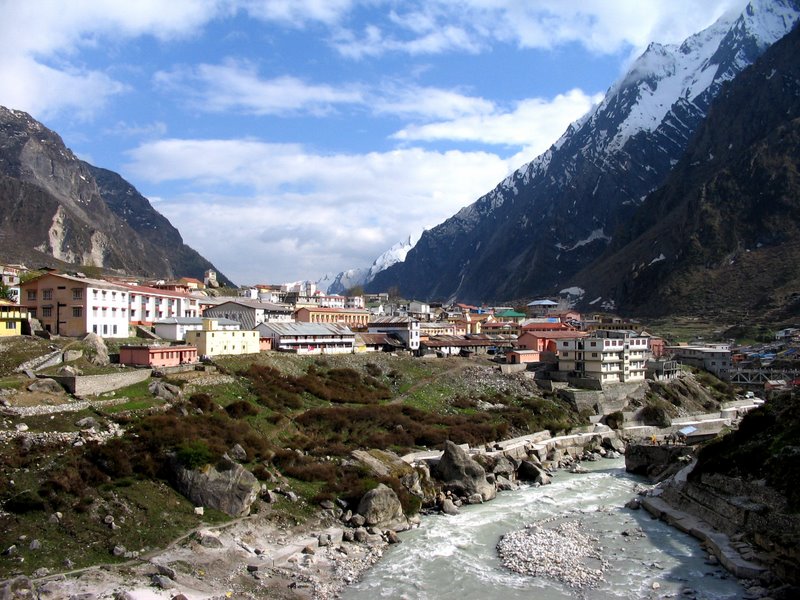Badrinath, located in the state of Uttarakhand, is one of India’s most captivating tourist destinations. It is delightfully set against the backdrop of the Neelkanth mountain peak and always hypnotises visitors with its unparalleled exquisiteness. This location, which is rich in legends and folklore, must be included on the itinerary of a true explorer. There are a number of places to visit near Badrinath that are worth exploring for an unforgettable travel experience. So, let me take you to 5 top places near Badrinath that you must visit during your Badrinath trip.
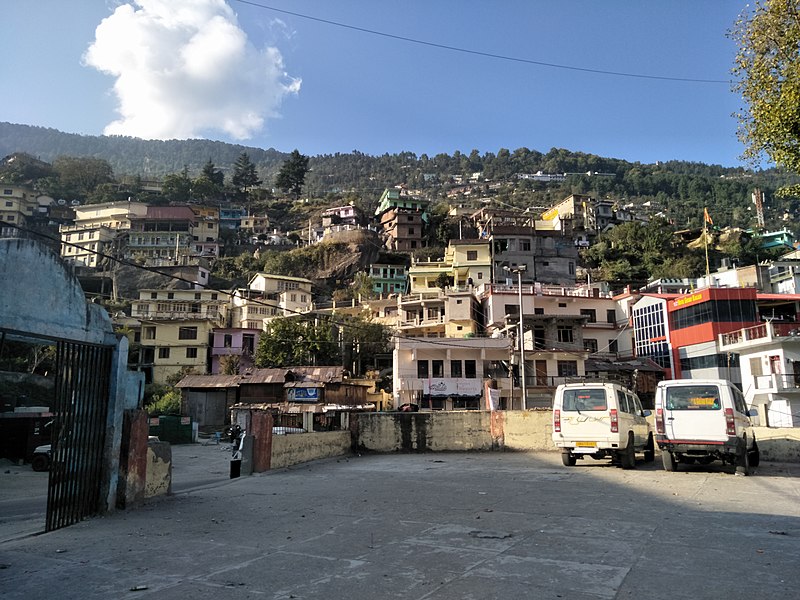
Post Contents
1.Joshimath: The gateway to Himalayan wonders
Located at a distance of 46 kms from Badrinath.It is one of the ‘Maths’ set up by Guru Adi Shankaracharya and serves as the winter abode of Shri Badrinath. Joshimath also known as Jyotirmath is connected with Auli by cable car, the highest cable car of Asia, Joshimath is located at an altitude of 1,890 mts above the sea level. Joshimath is situated in the Vishnuprayag region, where two rivers, the Dhauliganga and the Alaknanda, meet.
While in Joshimath, you can also visit Narsingh and Kalpavriksha temples. The sacred wish-fulfilling tree Kalpavriksha, which is said to be about 1200 years old, is not to be missed.. Beautiful flora and exotic fauna, Himalayan mountain ranges, valley of flowers, and scenic Hemkund Sahib are some breathtaking sights to see when visiting Joshimath. It is one of the best places to visit in the vicinity of Badrinath.
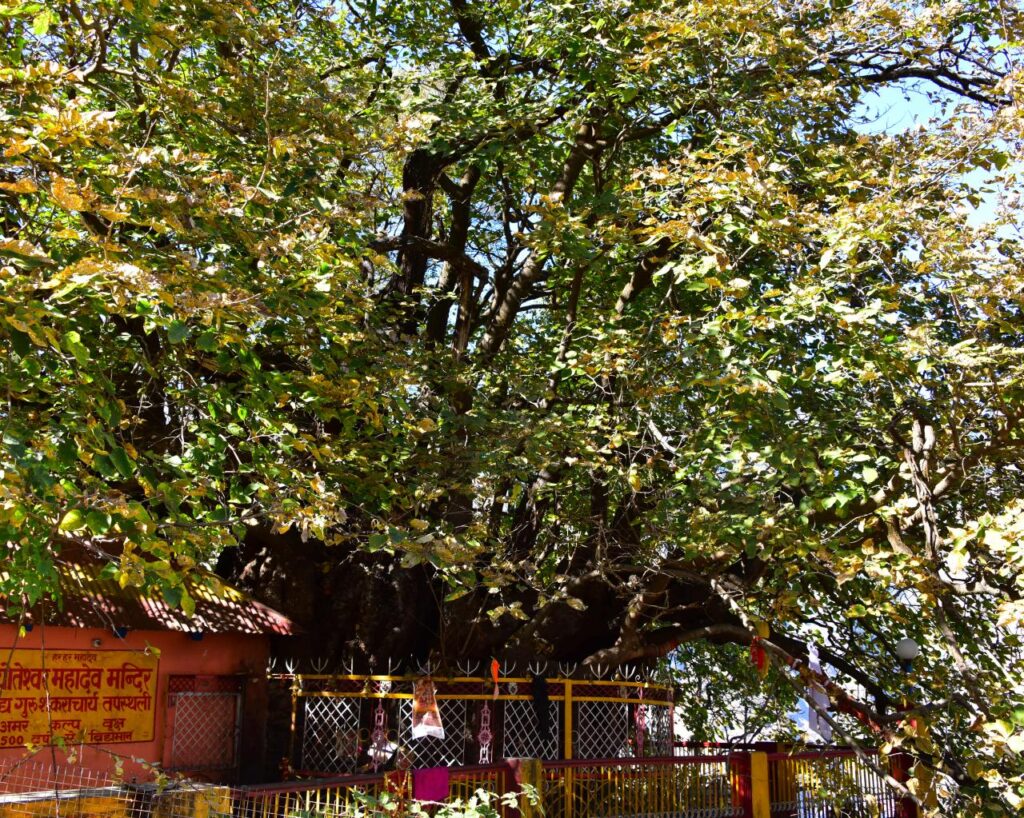
How to reach?
You have three options for getting to Joshimath. Joshimath, falls on NH 58, has good road connectivity to all of Uttrakhand’s major cities and towns, as well as neighbouring places like Delhi. The nearest railway station is Haridwar (240 kms) while the Jolly Grant Airport in Dehradun (272 kms) is the nearest airport.
When to Visit?
Joshimath experiences moderate summers and chilly winter seasons. Those who want to witness snow must travel to this place in winters, whereas in summers, this town is full of opportunities for trekking, camping, sightseeing and much more.
Where to stay?
Joshimath has a wide range of accommodation options, from hotels to resorts, inns to cottages. Most of the places to stay in the town and surrounding areas are reasonably priced.
The place has some of the best hotels that includes The Tattva, Hotel Dronagiri, Auli Resort, Hotel Mount View Annexy, Panchavati Inn and Kiskhindha Resort.
Related post: All You Need To Know About Badrinath Dham
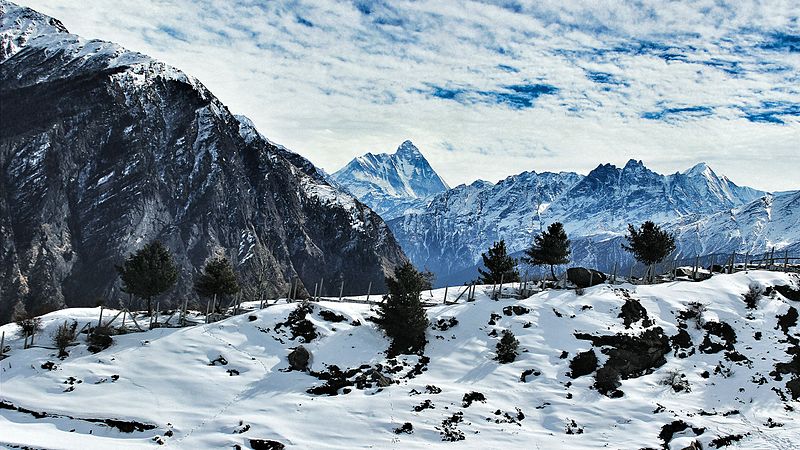
2.Auli: The Meadow
A quaint hill station, Auli is best known for the Himalayan Ski Resort. Auli has everything that a perfect tourist’s dream-like Himalayan scenery, meadows, snowy slopes, adventure activities, extravagant vistas, cable cars, and more. At an altitude of 2800 meters, Auli offers a view of some of the highest peaks such as the Nanda Devi, Kamat Kamet (K2), and Mana Parbat.
The former training ground of the Indo-Tibetan Police Force, Auli has gained the status of a popular hill resort within a short period of time because it is bestowed with all that is enough to thrill the onlookers. Nature at its full bloom gives a feeling of an awe-inspiring time for the visitors. This is undoubtedly one of the must-visit attractions near Badrinath.
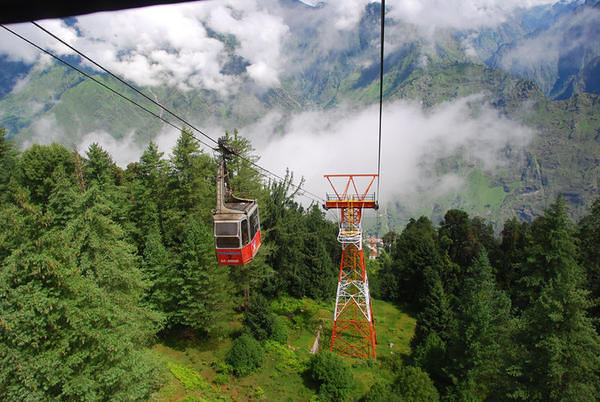
Things To Do in Auli
Gurso Bugyal Trek: Located about three kilometers from Auli, it is one of the best Auli treks that one can experience. Just a short climb from the center of Auli. Summer is the best time to enjoy the charm of lush green meadows spread across the landscape.
Skiing in Auli: If you are in Auli, this winter sport should be a must experience. Even when you are visiting Auli in summer, there is no dearth of snow as the whole ski resort is bound by snow on all sides and with the astonishing Himalayan Range in the backdrop.
Riding the cable car: When you are in Auli, don’t miss the cable car ride which has been touted as one of the longest and best in Asia. The 500 meters long ride that connects the base of Josimath with the Gurso Bugyal offers some of the spectacular views of the Himalayan vistas.
Artificial lake visit: One of the highest artificial lakes in the world, it has remained a favourite among tourists. The lake was constructed by the government to cater to the need for ice for skiing purposes when ice was not sufficiently available. The lake which turns into thin flakes of snow in summer and surrounded by greenery is a treat for your eyes.
Kwani Bugyal trek: A trek of the Kwani Bugyal in itself is some kind of an adventure as the meadow is known as a paradise for trekkers is perched at a breathtaking height of more than 10,000 feet. . And summer is the best season to experience the best of hiking.
How to reach Auli?
Auli is connected by roads from most cities of North India. The distance of Auli from Haridwar is 245 Kilometers and from the state capital Dehradoon it is 275 kilometers. The nearest airport is the Jolly Grant airport in Dehradoon. The nearest railway station is Rishikesh (225 Kms). To reach Auli, you first have to reach Josimath. From there you can take a taxi to Auli which is some 10 kilometers away.
Do Read: How to plan your Badrinath Trip-A complete guide
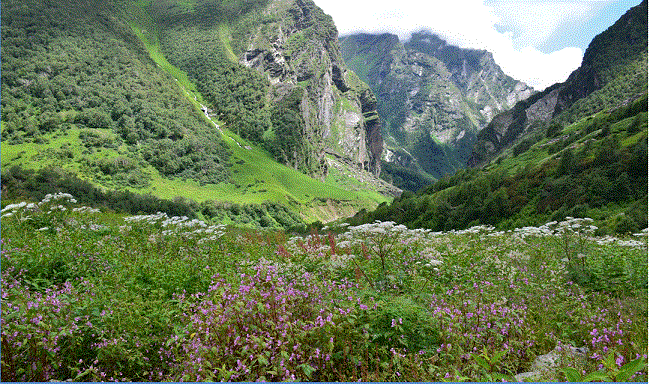
3.Valley of Flowers: The heaven on earth
One more must-see attraction that you must visit near Badrinath is Valley of Flowers National Park, a riot of colours, spread across 87 square kilometres in the Chamoli District of Uttarakhand’s Garhwal Region. The national park, which is located at an elevation of 3500 metres, is part of one of India’s largest biosphere reserves, Nanda Devi. To reach this national park, hike 17 kilometres from Ghangaria Village, which diverts a route towards the famous Sikh pilgrimage site, Hemkund Sahib.
This wildlife reserve, which has been in the UNESCO World Network of Biosphere Reserves since 2004, has breathtaking views and a plethora of flower species. Brahma Kamal is a rare species that can be seen during the peak season. The waterfalls, landscape, and lush green meadows add to the beauty of this location. Valley of Flowers National Park is home to a variety of fauna, including musk deer and red fox. Hundreds of flower species cover the park during the monsoon months, which begin in June, and their aroma soothes and contented the heart.
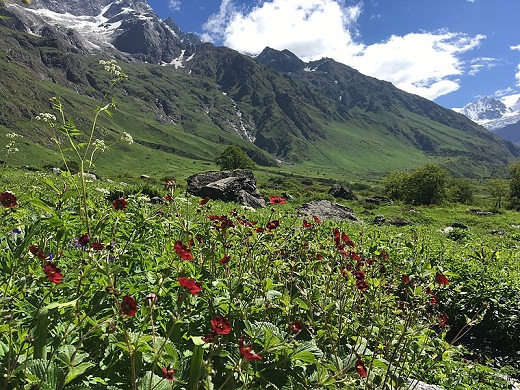
Entry Fees for visiting Valley of Flowers
The entry fee for visiting the Valley of Flowers National Park is Rs 150 per person for Indian Nationals. For foreigners the entry fee is Rs 600 per person. There are no stay options inside the national park. You must return by 4 PM on the same day.
Best time to visit valley of Flowers
The Valley of Flowers National Park is best visited between June 1st and October 21st, when the park is officially visited. However the monsoon months July and August are when you can see the Valley of Flowers in full bloom.
Also Read: JIranga Monastery: The Little Tibet of Odisha
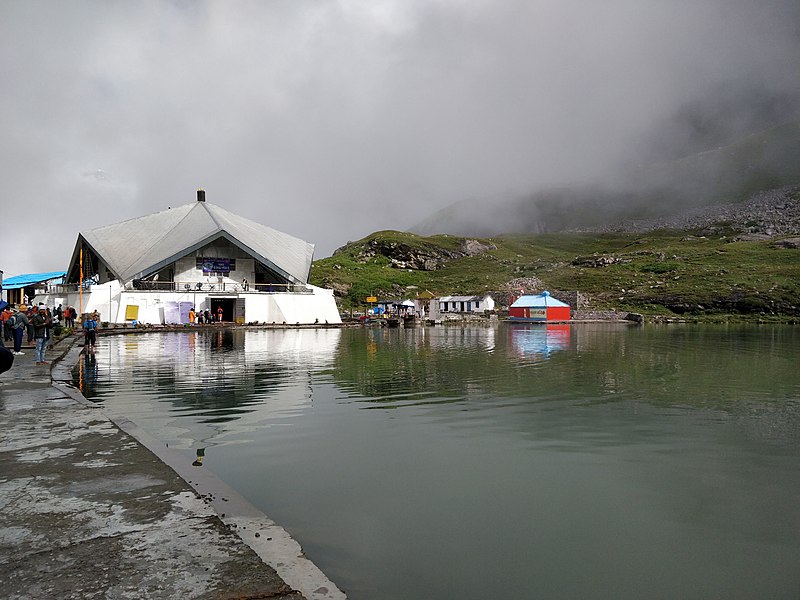
4.Hemkund Sahib: The highest Gurudwara in the world
Hemkund Sahib is a highly revered Sikh shrine and located quite close to Valley of Flowers National Park.. This religious site’s elevation of 4636 metres adds to its allure. This sacred Sikh pilgrimage destination, nestled in the lap of the Garhwal Himalayas, is visited annually by a large number of devotees from all over the world before it closes for the winter season between October and April. Do club your visit to Badrinath with Hemkund Sahib and make your tour worthwhile.
Sikh pilgrims begin to arrive at Hemkund Sahib in May to help repair the damaged trail over the winter months before performing pilgrimage. This is known as Kar Seva, or selfless service, and it is an important concept in the Sikh faith. Hemkund Sahib also has a beautiful lake where devotees go for a dip. According to Hindu mythology, Hemkunt Sahib was known as Lokpal, which is a lake where Lakshman, Lord Rama’s brother, meditated.
Places to Visit in Hemkund Sahib
The Hemkund sahib Gurudwara
Major General Harkirat Singh, Engineer-in-Chief, Indian Army, built the current Gurudwara in the 1960s. He chose Architect Siali to supervise the design and construction of this sacred pilgrimage site, which was designed with the environment and climatic conditions in mind. It is the world’s only pentagonal gurudwara.
Hemkund Lake
Hemkund Lake, located near the Hemkund Sahib Gurudwara, is a beautiful little body of water. Devotees who visit Hemkund Sahib take a dip in the sacred lake.
Valley of Flowers
The famous Valley of Flowers is quite close to Hemkund Sahib. This lovely place is accessible from Ghangharia, where the trails to Hemkund Sahib and the Valley of Flowers diverge. This high altitude national park is known for its diverse flora, which is in full bloom during the monsoon season.
Best time to visit Hemkund Sahib
The months of May to October are ideal for visiting Hemkund Sahib. During this time of year, roads are cleared of snow. However, the region experiences monsoon during these months, which can cause heavy downpours and roadblocks.
Related Post: Mana Village: Exploring the mystic last Indian village
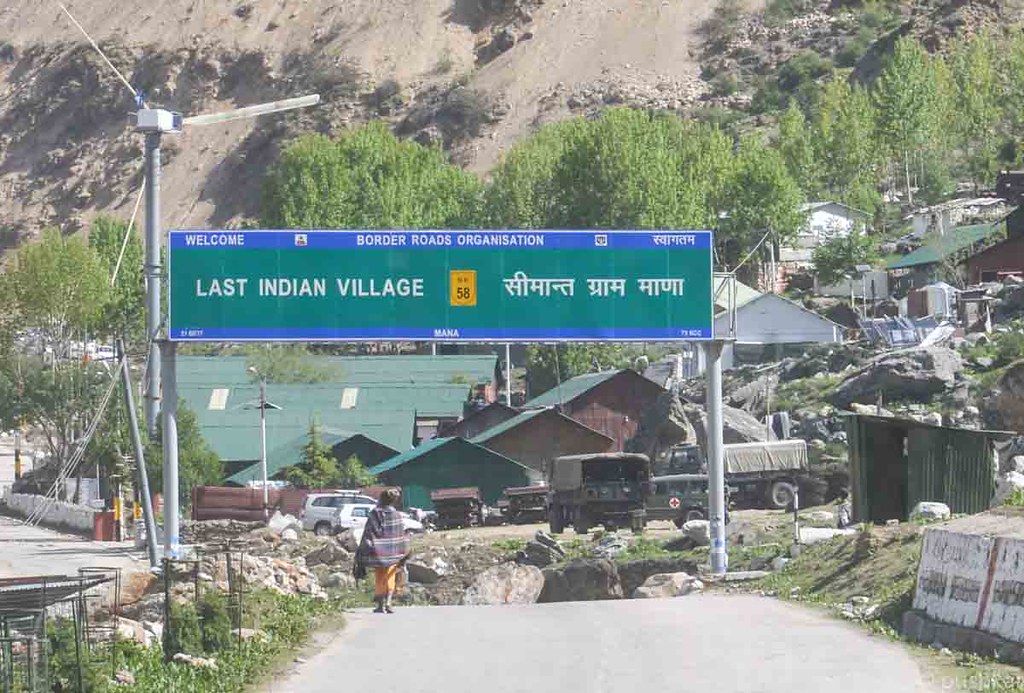
5.Mana: The Last Village of India
While visiting Badrinath, do travel a bit further and visit Mana, the last village of India in the Indo-China border. Mana village is just 3 kms to the north of Badrinath and a decent road leads you to the village. Mana is a small hamlet and it will only take only a few hours for you to explore the place.Once you are there, you realize that the place is worth the time.
People often get mixed up between Mana village in Uttarakhand and Chitkul in Himachal Pradesh when it comes to defining which is the “last Indian village.” To clarify, Chitkul is the last inhabited village on the Indo-China border, but Mana in Uttarakhand is officially recognised as “Last Village of India.”
Mana village is located in Uttarakhand’s Chamoli district, at an elevation of 3118 m, on the banks of the Saraswati river, about 3 kms from the famous Hindu holy shrine Badrinath. This delightful hamlet is situated 24 kms from the Indo-China border, making it India’s last village. If you explore the place, you’ll notice shopkeepers selling their products under the title ‘last village,’ such as ‘India’s Last Tea and Coffee Corner,’ that is both interesting and amusing.
Places to see in Mana village
Mana bears traces of Hindu mythology, the Mahabharata. It is believed that the Pandavas had to pass through this village on their way to heaven. Bheem, the strongest of the five brothers, had moved a huge rock to bridge the Saraswati river which is now popular as Bheem Pul and one of the most visited sites in Mana. The village also has some caves which have historical as well as mythological significance, a couple of which named after Veda Vyasa and Lord Ganesha makes for a mandatory visit.
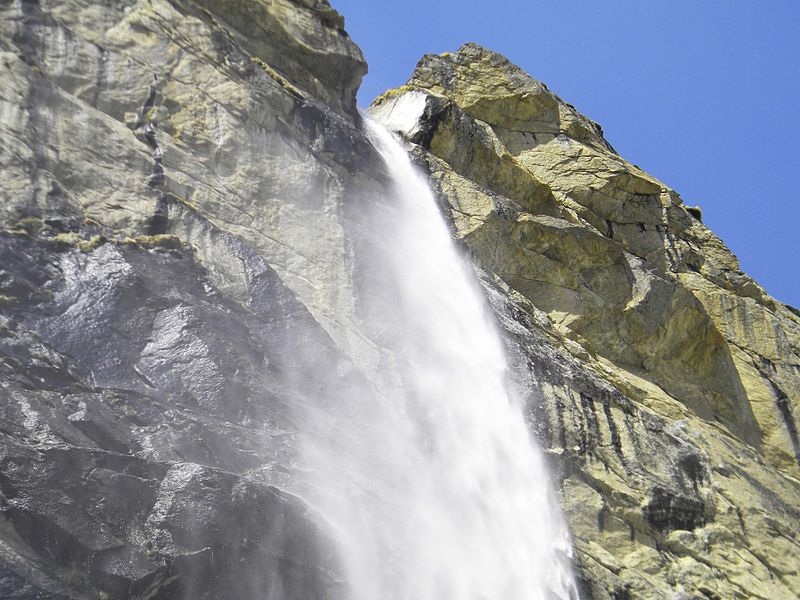
Mana village for adventure enthusiasts
There is more to Mana village than the Mahabharata trail. If you love adventure, then Mana is the perfect place for you. The village serves as the base point for several treks such as the Vasudhara Falls, Satopanth Lake, Swargarohini trek and the Mana Pass. You can tie your shoelaces because you can trek to a few places from here which are not only very appealing to devotees, but it also has a lot to offer adventure seekers.
How to reach Mana village?
Mana is easily accessible from Badrinath and Joshimath, both of which are well-connected to the rest of Uttarakhand. Travelers typically arrive in and hire taxis in Haridwar or Rishikesh, which are well connected to major cities such as Delhi and Dehradun.
Mana is 3 kms from Badrinath and 48 kms from Joshimath. The nearest railway station is in Haridwar, which is 275 kms away. Mana is 319 kms from the nearest airport in Jolly Grant, Dehradun.NH-58 leads you to the village which is the end point of the highway.
When to visit Mana village?
The peak season for visiting Mana Village is May-June, though it is still open until early November. Monsoon season is from July to September, and it is possible to visit during this time because the area receives less rainfall. However, roads on the way to Joshimath or Badrinath may be bad or have landslides during the monsoon. From November to April, Mana is inaccessible due to heavy snowfall.
Where to stay in Mana village?
You won’t find any hotel in Mana, but homestaying is an option. It is preferable to drive down to Badrinath, which is only 3 kilometres away. At Badrinath, there are numerous hole-in-the-wall and charity-run accommodations. Rooms will be very basic, with or without hot water. There will be plenty of options for hotels and homestays as well.

